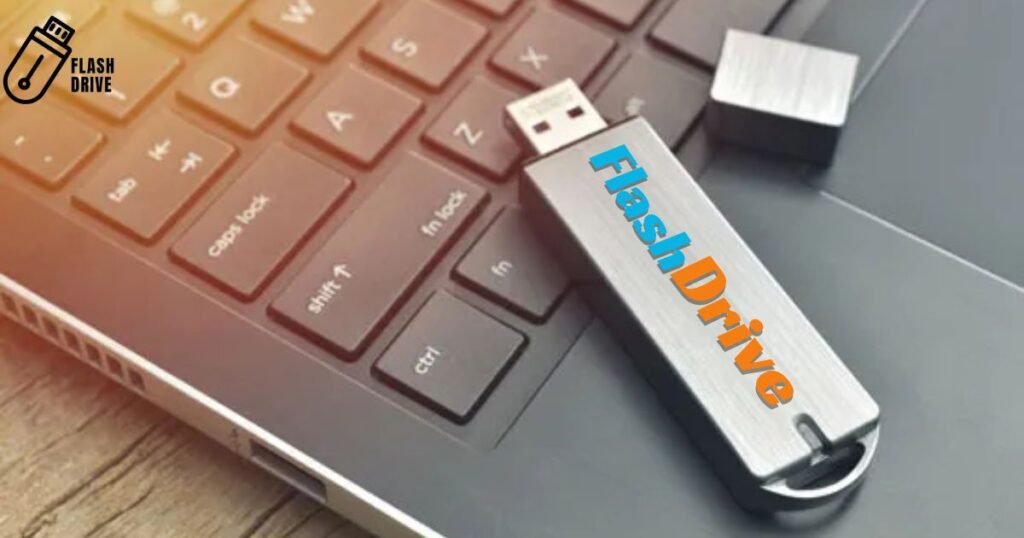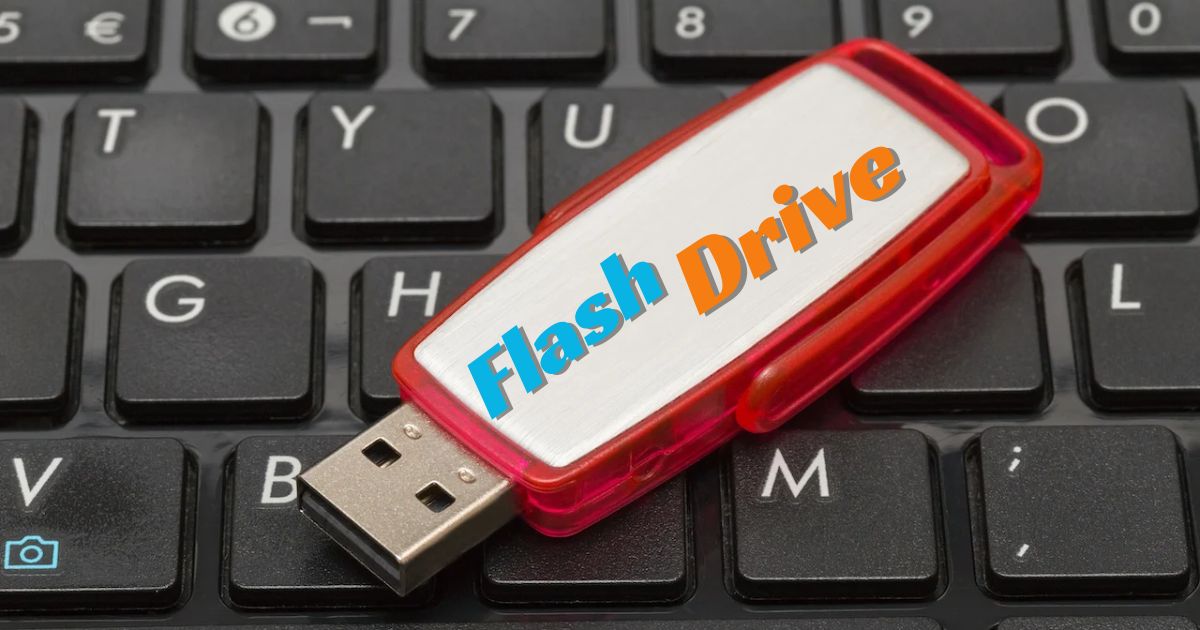To put a PowerPoint on a flash drive, open your presentation and click on “File” in the menu. Choose “Save As,” select your flash drive as the destination, and click “Save.” Now, your PowerPoint is saved on the flash drive, making it portable and easy to share.
Discovering how to transfer your PowerPoint presentation to a flash drive is a simple yet crucial skill. How do I put a PowerPoint on a flash drive? With just a few easy steps, you can ensure your slideshows are portable and ready to impress on any computer. Unveil the convenience of sharing your presentations hassle-free by mastering this quick and essential process.
To put a PowerPoint on a flash drive, first, open your PowerPoint presentation and save it to your computer. Then, insert the flash drive into a USB port. Finally, copy and paste the PowerPoint file from your computer to the flash drive. Now, you can easily share your presentation by plugging the flash drive into another computer.
Saving PowerPoint Presentation to a Flash Drive
Saving a PowerPoint presentation to a flash drive is a straightforward process. First, ensure your PowerPoint is saved on your computer. Next, insert the flash drive into a USB port. Then, locate your PowerPoint file and right-click to select “Copy.”
Navigate to your flash drive folder, right-click, and choose “Paste” to transfer the PowerPoint onto the flash drive. Once completed, safely eject the flash drive. To access your PowerPoint on a different device, simply plug the flash drive in, locate the file, and open it.
With this method, sharing and transporting PowerPoint on a flash drive becomes convenient and efficient for presentations or collaborations. Always remember to keep backups of your important files, including your PowerPoint on a flash drive, for added security and accessibility.
Preparing to Save Your Presentation
When preparing to save your presentation for easy portability, ensure that your PowerPoint on a flash drive is organized and ready for transfer. Begin by opening your PowerPoint file and selecting “Save As.” Choose a location on your computer to save the file, and then insert the flash drive into a USB port.
Within the “Save As” window, locate the flash drive in your file explorer, select it, and click “Save.” This process ensures that your PowerPoint on a flash drive is conveniently stored, allowing seamless sharing and accessibility across different devices.
Saving the Presentation
Saving your PowerPoint presentation on a flash drive is a straightforward process. Begin by opening your presentation and selecting “Save As” from the File menu. Choose a location on your computer to save the file and name it appropriately. Next, insert your flash drive into a USB port. Locate the saved presentation on your computer, then copy it and paste it onto the flash drive.
With your PowerPoint on a flash drive, you can conveniently carry and share your presentation by plugging the flash drive into any compatible computer. Always remember to safely eject the flash drive to avoid data loss. Power up your presentations with the simplicity of storing them on a flash drive for easy accessibility anytime, anywhere.
Step-by-step guide to how to use PowerPoint on a USB flash drive for presentations

- Insert your USB flash drive into a compatible port on your computer.
- Open PowerPoint on your computer and create or open the presentation you want to save on the USB flash drive.
- Click on “File” in the top left corner, then select “Save As” from the dropdown menu.
- Choose your USB flash drive as the location to save the presentation file.
- Name your file and click “Save” to transfer the PowerPoint presentation to the USB flash drive.
- Safely eject the USB flash drive from your computer once the transfer is complete.
- Insert the USB flash drive into the computer you’ll be using for the presentation.
- Locate the USB drive in the file explorer and open the PowerPoint file.
- Verify that all multimedia elements and formatting are intact.
- Practice navigating through your presentation to ensure smooth transitions.
- Adjust any settings, such as slide show options, according to your preferences.
- Rehearse your presentation on the actual computer to familiarize yourself with the setup.
- Keep a backup copy of your presentation on the USB flash drive for contingency.
- When ready to present, connect the USB flash drive to the projector or display device.
- Launch the PowerPoint presentation from the USB flash drive, delivering a seamless and professional presentation experience.
Selecting the Right Flash Drive for Your PowerPoint Presentation:
Choosing the appropriate flash drive is crucial for a seamless PowerPoint presentation. Opt for a USB drive with sufficient storage capacity to accommodate your presentation file along with any multimedia elements.
Ensure compatibility with both your computer and the devices you’ll be using during the presentation. A reliable, high-speed flash drive can enhance data transfer rates, minimizing potential delays during your presentation.
Step-by-Step Guide: Saving Your PowerPoint to a USB Drive
Saving your PowerPoint presentation to a USB drive involves a few straightforward steps. After opening your presentation in PowerPoint, navigate to the “File” menu and select “Save As.”
Choose your USB drive as the designated location and provide a relevant file name. Click “Save,” and your presentation will be transferred to the flash drive. This step-by-step process ensures that your PowerPoint file is stored securely on the USB drive and can be easily accessed when needed.
Ensuring Compatibility: Formatting Your Flash Drive for PowerPoint
To guarantee compatibility, it is essential to format your flash drive appropriately for PowerPoint. Most flash drives come pre-formatted, but if not, you may need to format it to a compatible file system such as FAT32 or ex-FAT.
This ensures that the drive can be recognized by various operating systems and devices. Remember that formatting erases all data on the drive, so be sure to back up any important files before proceeding.
Safely Transferring Your Presentation: Best Practices for USB Usage
Adhering to best practices for USB usage is critical to prevent data corruption and ensure a smooth transfer process. Always eject the USB drive safely from your computer before physically removing it to avoid potential data loss. Additionally, consider using high-quality, reputable USB drives to minimize the risk of file errors.
Regularly back up your presentation on another storage device to mitigate the impact of unforeseen issues, providing an extra layer of security for your valuable content. These precautions contribute to a reliable and trouble-free experience when using a USB drive for your PowerPoint presentations. Troubleshooting Tips: Common Issues When Putting PowerPoint on a Flash Drive
Optimizing Multimedia: Tips for Embedding Videos and Audio in Your Presentation
| Tips for Optimizing Multimedia in Presentations |
| 1. File Formats: Ensure your videos and audio files are in widely supported formats (e.g., MP4 for videos, MP3 for audio) to ensure compatibility when sharing your PowerPoint on a flash drive. |
| 2. Compression: Compress multimedia files to reduce their size, allowing for smoother playback when transferring your PowerPoint on a flash drive. Utilize tools to maintain quality while minimizing file size. |
| 3. Offline Accessibility: Embed videos and audio directly into your PowerPoint to ensure offline accessibility when presenting from a flash drive. This eliminates the need for an internet connection. |
| 4. Check Compatibility: Before transferring your PowerPoint on a flash drive, verify that the multimedia elements work seamlessly on different computers by testing them in advance. |
| 5. USB Drive Considerations: Opt for a reliable and adequately sized flash drive. Ensure there’s enough space to accommodate your PowerPoint presentation and embedded multimedia files. |
| 6. Save Locally: Save a copy of your PowerPoint presentation with embedded multimedia locally on your computer before copying it onto a flash drive for added security. |
| 7. Embed Responsibly: Be mindful of file sizes when embedding multimedia. Large files may impact the responsiveness of your PowerPoint on a flash drive, potentially leading to slower loading times. |
| 8. Presentation Mode: Always check your presentation in full-screen mode from the flash drive on different computers to confirm that multimedia elements play smoothly. |
Customizing Settings: Tailoring Your PowerPoint for Portable Presentations
Customizing settings for PowerPoint on a flash drive is key for seamless portable presentations. Start by adjusting slide dimensions to match the display, ensuring a consistent view. Optimize image and multimedia settings to balance quality and file size, ensuring smooth playback when sharing your PowerPoint on a flash drive.
Choose a clear and legible font size for easy readability on diverse screens. Embed videos and audio directly into your presentation to enhance offline accessibility when using PowerPoint on a flash drive. Save your customized settings along with the presentation file for a hassle-free experience on any computer. Keep in mind that the flash drive’s capacity should accommodate both the presentation and any embedded files.
Regularly test your customized PowerPoint on a flash drive on different devices to catch any compatibility issues. Always select the ‘Portable’ or ‘Package Presentation for CD’ option when saving, ensuring all linked files travel with your PowerPoint on a flash drive. Adjust transition and animation settings for a polished yet subtle delivery. With these tailored settings, your PowerPoint on a flash drive will be ready for impactful presentations anytime, anywhere.
FAQ’s
How do I save my PowerPoint presentation to a flash drive?
To save your PowerPoint presentation to a flash drive, first, open the file, then select “Save As” from the File menu. Choose your flash drive as the destination and click “Save.”
What file format is best for storing PowerPoint presentations on a flash drive?
It is recommended to save your PowerPoint presentation in the default .pptx format. This format is widely supported and ensures compatibility when transferring the file to a flash drive.
Can I embed multimedia files in my PowerPoint presentation on a flash drive?
Yes, you can. Embedding videos and audio directly into your PowerPoint presentation ensures they travel with the file when saved on a flash drive, providing offline accessibility on any compatible device.
Do I need to adjust settings before saving my PowerPoint on a flash drive?
Yes, consider adjusting settings such as slide dimensions, font size, and multimedia optimization to tailor your presentation for portable use. These adjustments enhance the viewing experience on different devices.
How do I safely eject the flash drive after transferring my PowerPoint presentation?
To safely eject the flash drive, locate the USB icon in your system tray (Windows) or on your desktop (Mac). Right-click (Windows) or Control-click (Mac) on the icon and select the option to eject or safely remove the flash drive before physically unplugging it from the computer.
Conclusion
In conclusion, transferring your PowerPoint presentation to a flash drive is a straightforward process that allows for convenient portability and easy sharing. By saving the presentation on your computer, inserting the flash drive, and copying the file over, you create a portable version of your content that can be accessed on different computers.
This method not only eliminates the need for an internet connection but also ensures that your presentation remains intact, including any embedded multimedia elements. Overall, putting a PowerPoint on a flash drive is a practical solution for professionals, educators, and anyone who needs to share their presentations without the constraints of specific devices or online access. It provides flexibility and accessibility, making your presentations truly portable and ready to impress in various settings.











